
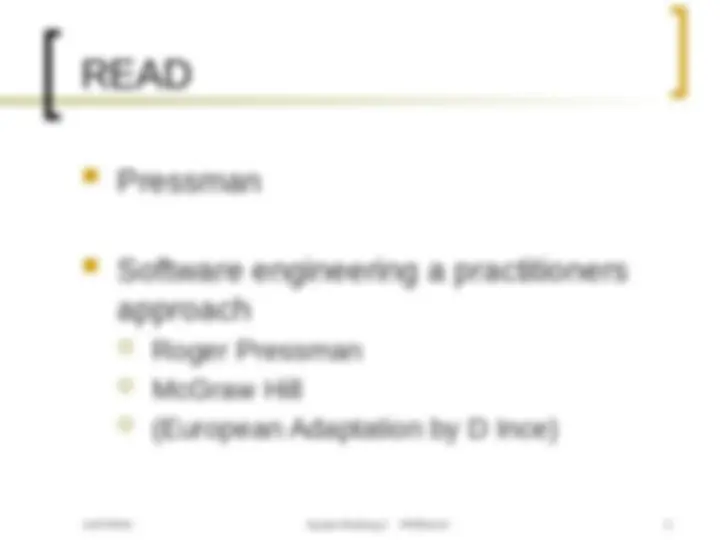
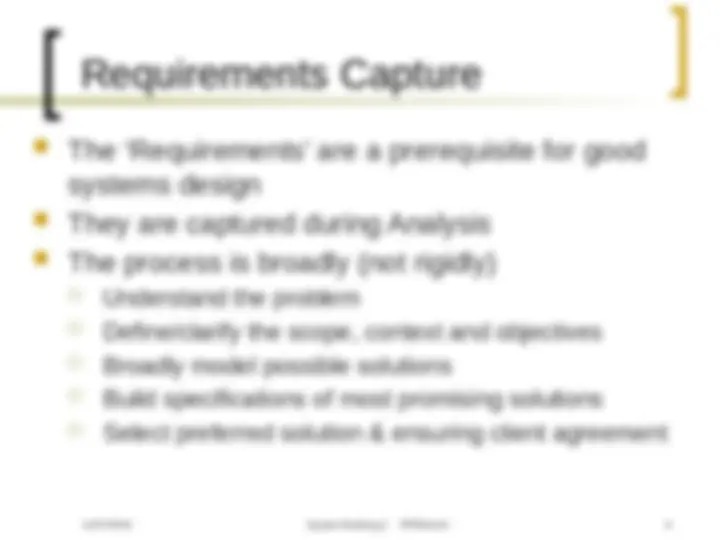
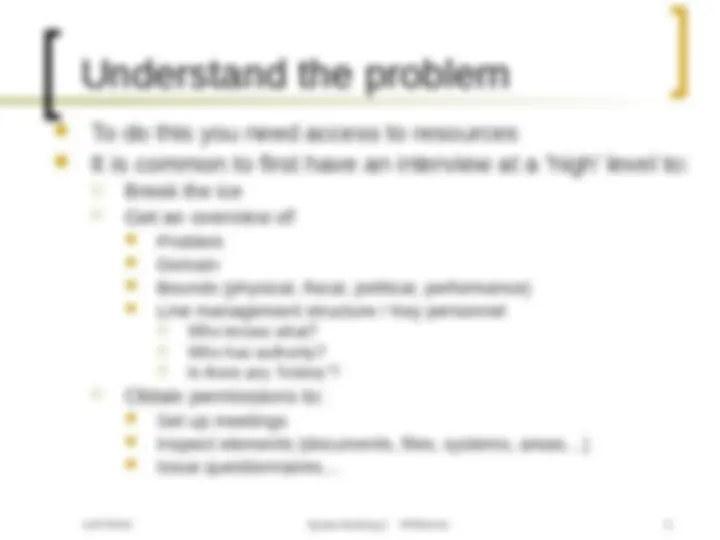
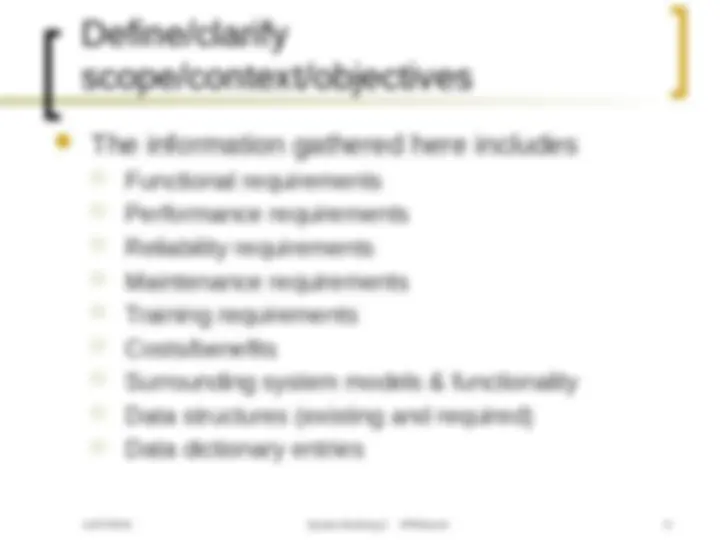
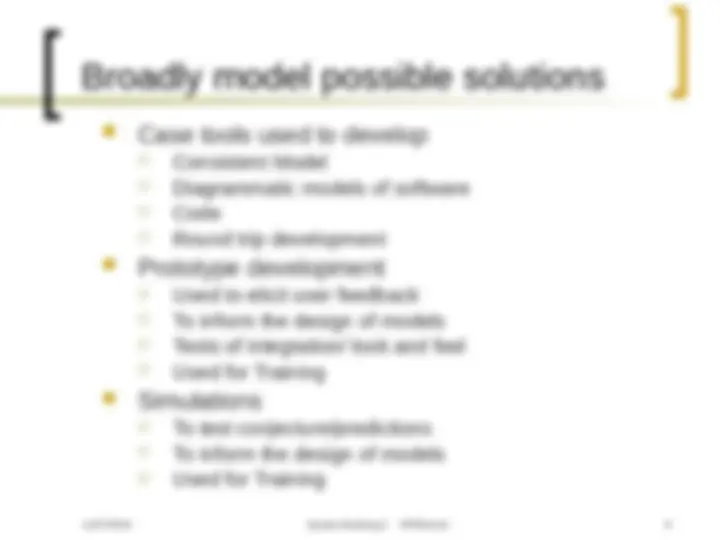
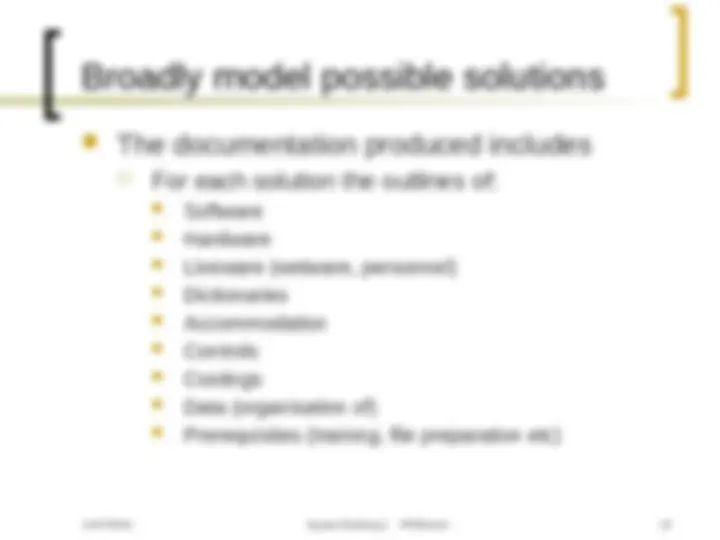
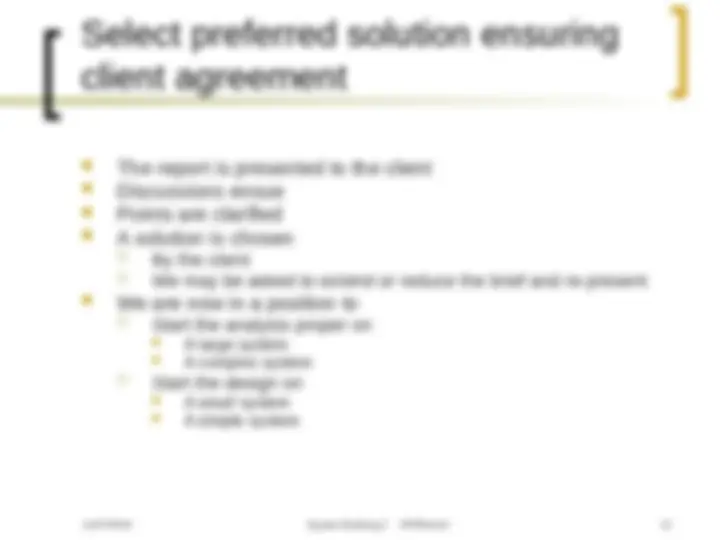
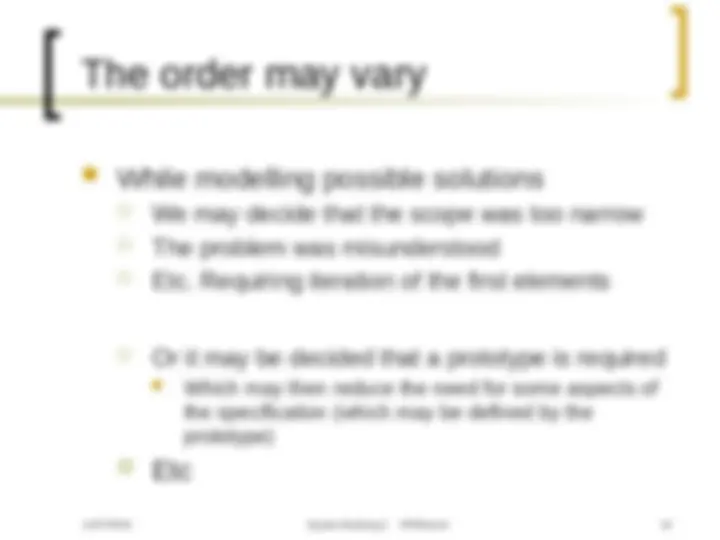
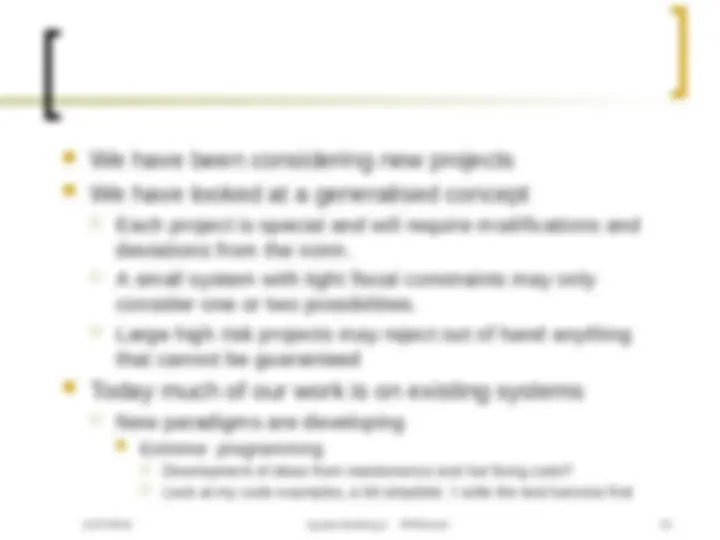


Study with the several resources on Docsity

Earn points by helping other students or get them with a premium plan


Prepare for your exams
Study with the several resources on Docsity

Earn points to download
Earn points by helping other students or get them with a premium plan
Community
Ask the community for help and clear up your study doubts
Discover the best universities in your country according to Docsity users
Free resources
Download our free guides on studying techniques, anxiety management strategies, and thesis advice from Docsity tutors
The process of requirements capture during the system building 2 course. Students learn how to understand the problem, define scope and objectives, and model possible solutions. Techniques include interviews, questionnaires, and inspections. The importance of documenting findings and assessing feasibility is emphasized.
Typology: Lecture notes
1 / 16

This page cannot be seen from the preview
Don't miss anything!










Define/clarify scope/context/objectives (^) The tools used here include (^) Questionnaires (^) Structured development meetings (eg. See FAST in Pressman) (^) Definition (^) Discussion (^) Proposals (^) Agreements (^) Inspections/Interviews (^) Cost benefit analysis/ Risk analysis (^) Models (both abstract and concrete) (^) Tables of standard metrics (^) Data Dictionary
Define/clarify scope/context/objectives The information gathered here includes
Functional requirements
Performance requirements
Reliability requirements (^) Maintenance requirements
Training requirements
Costs/benefits
Surrounding system models & functionality
Data structures (existing and required)
Data dictionary entries
Broadly model possible solutions The documentation produced includes
For each solution the outlines of: (^) Software (^) Hardware (^) Liveware (wetware, personnel) (^) Dictionaries (^) Accommodation (^) Controls (^) Costings (^) Data (organisation of) (^) Prerequisites (training, file preparation etc)
Broadly model possible solutions Models Schedules Dictionaries Prototypes Simulations (^) Architecture (^) Software (^) Hardware Deployment
Select preferred solution ensuring client agreement (^) The report is presented to the client (^) Discussions ensue (^) Points are clarified (^) A solution is chosen (^) By the client (^) We may be asked to extend or reduce the brief and re-present (^) We are now in a position to (^) Start the analysis proper on
(^) Start the design on
(^) Today most of our work is on existing systems (^) New paradigms are developing (^) Extreme programming (^) Development of ideas from (^) ‘Best Practice’ (^) Maintenance and hot fixing of code (^) And a need to reduce time between inception and delivery (^) Look at my small code examples (^) They are a bit simplistic and not written for this purpose but… (^) I determine requirements and rough out a design (^) I write a simple test harness and stubs (^) then repeatedly
(^) Review and plan progression (^) Turn the stubs into test harnesses and create more stubs…